This article was medically reviewed by Danielle Jacks, MD. Danielle Jacks, MD is a Surgical Resident at Ochsner Clinic Foundation in New Orleans, Louisiana. She has over six years of experience in general surgery. She received her MD from Oregon Health and Science University in 2016.
There are 9 references cited in this article, which can be found at the bottom of the page.
This article has been viewed 63,964 times.
Studies show that most clavicle fractures happen due to falls, sports injuries, or car accidents.[1] Your clavicle, or your collar bone, goes from the top of your breastbone to your shoulder blade, so a fracture can cause an intense amount of pain in your upper body. If you think you have a broken clavicle, you should see a medical professional right away to make sure it heals properly. Experts note that you can manage the pain of your fractured clavicle through home remedies and over-the-counter medication.[2]
Steps
Seeking Medical Care
-
1Recognize the symptoms of a fractured clavicle. It hurts and has a distinctive set of symptoms. People with clavicle fractures often have:[3] [4]
- Pain that gets worse when the shoulder moves
- Swelling
- Pain when the clavicle is touched
- Bruising
- A bump on or near the shoulder
- A crunching noise or grinding sensation when you move your shoulder
- Difficulty moving the shoulder
- Tingling or numbness in your arm or fingers
- A sagging shoulder
-
2Go to the doctor so the bone can be set properly. This is important so that it can heal as quickly as possible and in the proper position. Bones that don't heal in the proper position often heal with strange-looking lumps.[5] [6]
- The doctor will do an X-ray and maybe even a CT scan to figure out exactly where the fracture is.
- The doctor will put your arm in a sling. This is because when you move your shoulder, your clavicle also moves. It may also reduce the pain by taking some of the weight off the fractured clavicle.
- Children will have to wear the sling for one to two months. Adults will have to wear it for two to four months.
- The doctor might have you wear a figure-eight bandage to keep your arm and collarbone in the correct position.
Advertisement -
3Have surgery if the broken ends of the bone don’t connect. If this is the case, it may be necessary to have surgery to hold the pieces in the correct position while they heal. While surgery is unpleasant, it will make sure that it heals without any remaining marks or lumps.[7] [8]
- The doctor may use plates, screws, or rods to stabilize the bone.
Managing the Pain During Recovery
-
1Reduce pain and swelling with ice. The cold will slow down the rate of swelling. It will also help numb it a little bit.[9]
- Use an ice pack or a bag of frozen peas wrapped in a towel. Don’t put the ice directly on your skin because this can damage your skin.
- On the first day, ice the fracture for 20 minutes per hour each hour during the day.
- For the next few days afterwards, use the ice every three to four hours.
-
2Rest. If you stay quiet your body will be able to direct more energy into healing. Resting will also reduce your chances of injuring yourself more.[10]
- If it hurts to move your arm, don’t. That is your body telling you that it is too soon.
- You may need more sleep while healing. Be sure to get at least eight hours.
- Being rested will also put you in a better mood and help you cope with the pain.
-
3Get relief from over-the-counter painkillers. These medications will also reduce inflammation. But wait 24 hours after the injury occurred before using these medications because they can increase bleeding or may decrease bone healing.[11] [12] Waiting 24 hours allows your body to begin healing naturally.
- Take over-the-counter NSAIDs, such as ibuprofen (Advil, Motrin) or naproxen (Aleve, Naprosyn), if your doctor approves them. However, don't combine them or take more than recommended because they can cause kidney damage. Additionally, you may develop gastric ulcers if you use them long term.
- Follow the manufacturer’s instructions and your doctor’s orders. Do not take more.
- Do not give medications containing aspirin to children under 19.
- Consult your doctor if you have or have previously had heart disease, high blood pressure, kidney problems, stomach ulcers or internal bleeding.
- Do not mix these medications with alcohol or other medications including over-the-counter medications, herbal remedies, or supplements.
- Talk to your doctor if your pain is still unbearable. Your doctor can write you a prescription for something stronger.
Promoting Rapid Healing
-
1Eat a diet that is rich in calcium. Calcium is vital for your body to build bone. The following foods are good sources of calcium:[13]
- Cheese, milk, yogurt, and other dairy.
- Broccoli, kale, and other dark, green, leafy vegetables.
- Fish with bones soft enough to eat, such as sardines or canned salmon
- Foods where calcium has been added. Examples include soy, cereal, fruit juice, and milk substitutes.
-
2Get enough vitamin D. Vitamin D is necessary for people to absorb calcium. You can get vitamin D from:[14] [15]
- Spend 15 minutes to an hour in the sun each day. Your body will produce vitamin D when sunlight hits your skin. Check with your doctor to find out how long you can stay outside without sun protection. If you're going to be out longer than recommended, always wear sunscreen to lower your risk of skin cancer.
- Eating eggs, meat, salmon, mackerel, and sardines.
- Eating foods that have had vitamin D added, such as cereal, soy products, dairy, and powdered milk.
-
3Help your body heal with physical therapy. This will help reduce stiffness while you are wearing the sling. After the sling is off, it will help you strengthen the muscles and regain flexibility.[16] [17]
- The physical therapist will give you exercises that are designed for your level of strength and healing. Be sure to do them as directed.
- Build up slowly. If it hurts, stop. Don’t do too much too soon.
-
4Ease stiffness with warmth. Once the injury is no longer swelling, you can apply heat. This will feel good and increase circulation. Either warm or dry heat should help.
- If you feel sore after physical therapy, this may help.
- Apply a warm pack for about 15 minutes. But don’t put it directly onto your skin. Wrap it in a towel so you won’t burn yourself.
-
5Ask your doctor if you are strong enough for other pain reduction methods. But don’t do these activities before your doctor says you are ready. Possibilities include:
- Acupuncture
- Massage
- Yoga
Expert Q&A
-
QuestionMy 4-yr-old son fractured his clavicle two weeks ago. Five days after the fracture he started using his arm as usual and didn't want to wear the sling. He doesn't complain of pain. Can the bone heal right?
 Danielle Jacks, MDDanielle Jacks, MD is a Surgical Resident at Ochsner Clinic Foundation in New Orleans, Louisiana. She has over six years of experience in general surgery. She received her MD from Oregon Health and Science University in 2016.
Danielle Jacks, MDDanielle Jacks, MD is a Surgical Resident at Ochsner Clinic Foundation in New Orleans, Louisiana. She has over six years of experience in general surgery. She received her MD from Oregon Health and Science University in 2016.
Surgical Resident It depends on the location and severity of the fracture. Talk to your child's pediatrician or the doctor treating his fracture to make sure the bone can heal correctly.
It depends on the location and severity of the fracture. Talk to your child's pediatrician or the doctor treating his fracture to make sure the bone can heal correctly.
References
- ↑ https://my.clevelandclinic.org/health/diseases/16874-broken-collarbone-clavicle-fracture
- ↑ https://orthoinfo.aaos.org/en/diseases--conditions/clavicle-fracture-broken-collarbone/
- ↑ https://www.nlm.nih.gov/medlineplus/ency/patientinstructions/000529.htm
- ↑ https://www.massgeneral.org/assets/MGH/pdf/orthopaedics/sports-medicine/physical-therapy/rehabilitation-protocol-for-clavicle-fracture.pdf
- ↑ http://www.mayoclinic.org/diseases-conditions/broken-collarbone/basics/treatment/con-20035171
- ↑ http://www.mayoclinic.org/diseases-conditions/broken-collarbone/basics/tests-diagnosis/con-20035171
- ↑ https://www.nlm.nih.gov/medlineplus/ency/patientinstructions/000529.htm
- ↑ https://www.hopkinsmedicine.org/health/treatment-tests-and-therapies/clavicle-fracture-open-reduction-and-internal-fixation
- ↑ https://www.nlm.nih.gov/medlineplus/ency/patientinstructions/000529.htm
- ↑ https://www.nlm.nih.gov/medlineplus/ency/patientinstructions/000529.htm
- ↑ https://www.nlm.nih.gov/medlineplus/ency/patientinstructions/000529.htm
- ↑ http://www.mayoclinic.org/diseases-conditions/broken-collarbone/basics/treatment/con-20035171
- ↑ https://mypvhc.com/bone-fracture/
- ↑ https://mypvhc.com/bone-fracture/
- ↑ http://www.nhs.uk/Livewell/Summerhealth/Pages/vitamin-D-sunlight.aspx
- ↑ http://www.mayoclinic.org/diseases-conditions/broken-collarbone/basics/treatment/con-20035171
- ↑ https://www.nlm.nih.gov/medlineplus/ency/patientinstructions/000529.htm
About This Article
To relieve pain from a clavicle fracture, you should go to a doctor so they can set your bone properly, if you haven’t already. While you’re recovering at home, hold an ice pack or a bag of frozen peas wrapped in a towel against your collar for up to 20 minutes to reduce swelling. If your fracture is causing you a lot of pain, try using over-the-counter medications like ibuprofen or naproxen. Once the swelling subsides, use a hot compress or hot water bottle to increase circulation. You should also try to rest as much as possible to maintain the energy your body needs to heal itself. For more tips from our Medical co-author, including how to aid recovery of your clavicle fracture through diet, read on!
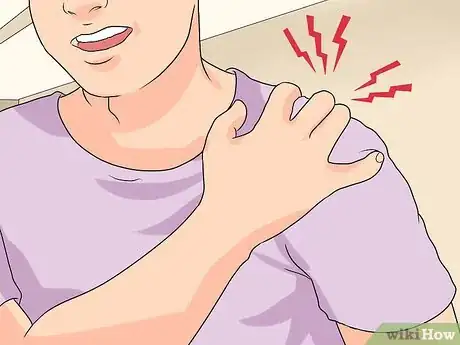




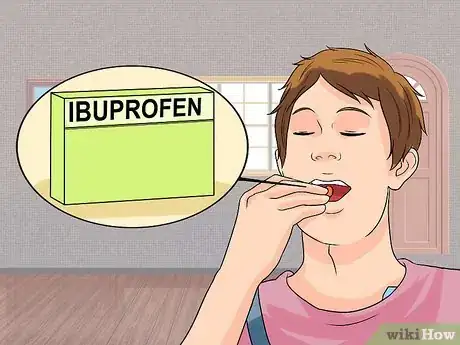




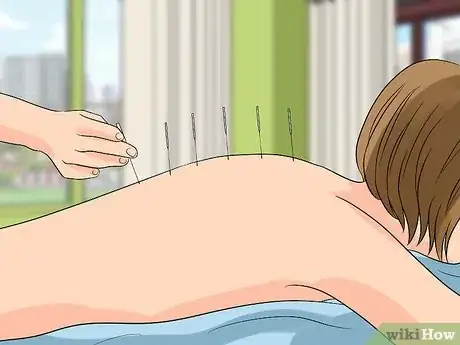

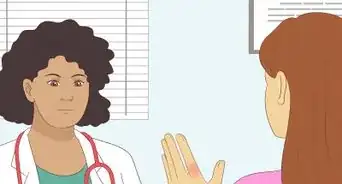

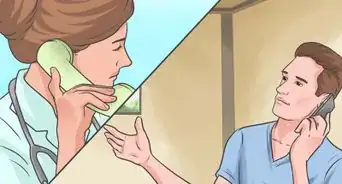

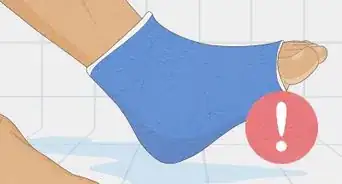
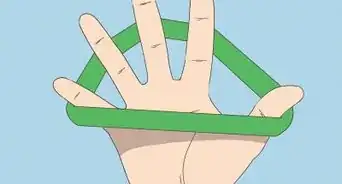

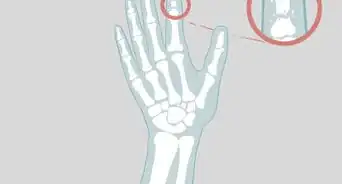

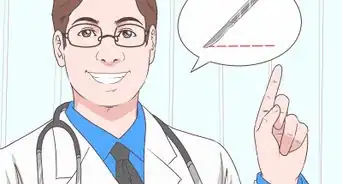











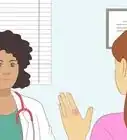

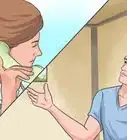



































Medical Disclaimer
The content of this article is not intended to be a substitute for professional medical advice, examination, diagnosis, or treatment. You should always contact your doctor or other qualified healthcare professional before starting, changing, or stopping any kind of health treatment.
Read More...